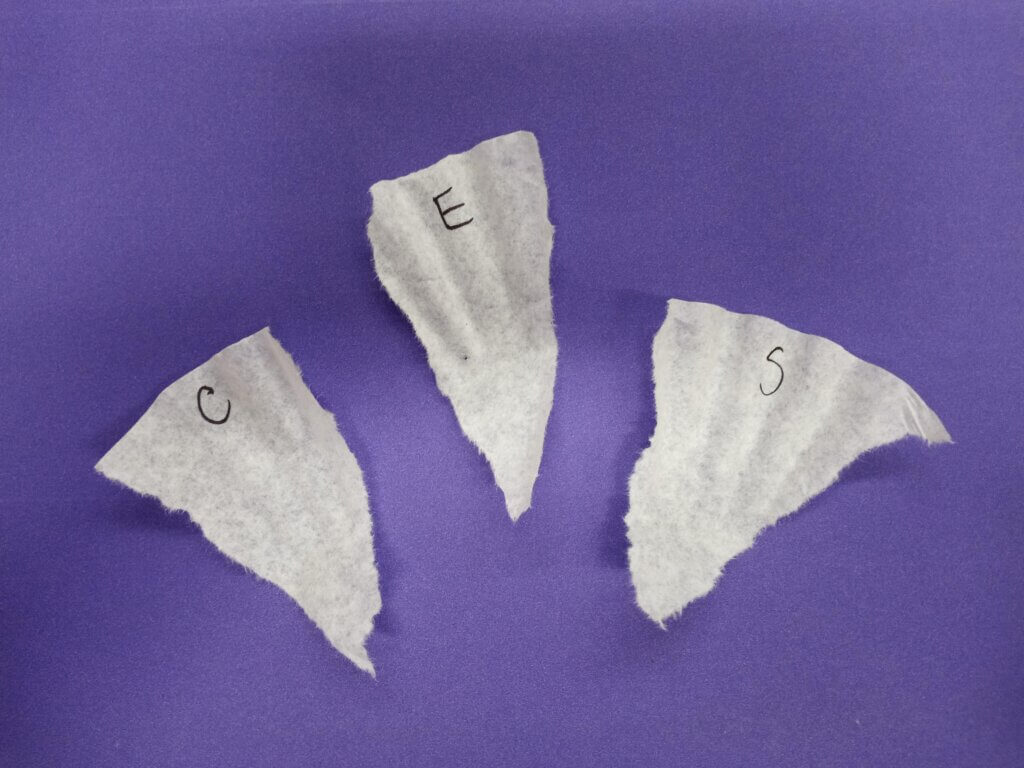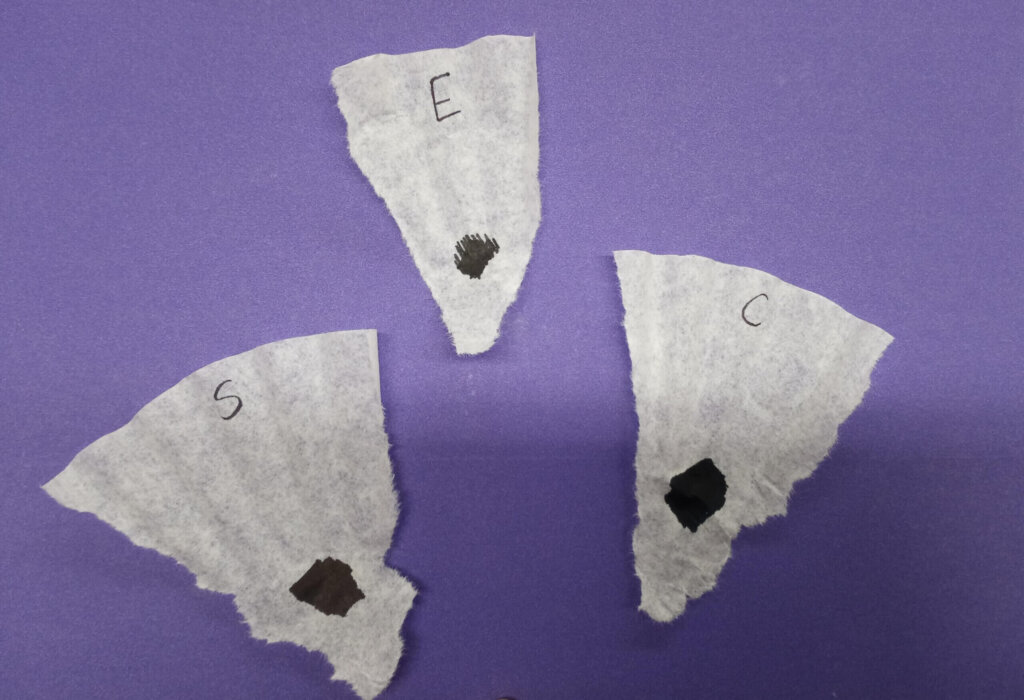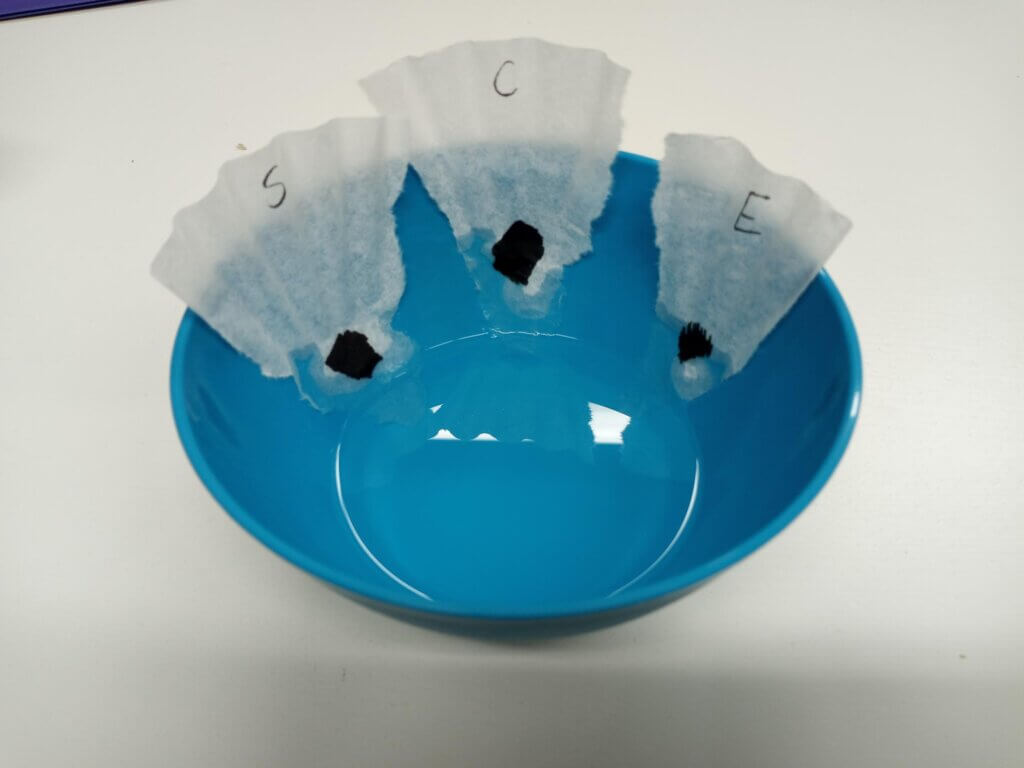What pigments are in different types of black markers?
Try this Chromatography experiment and watch as ink breaks down into different colors!
Chromatography is a really useful technique for chemists, helpful in everything from identifying biological materials to finding clues at crime scenes. Chromatography separates the parts of a mixture based on whether they like to stick to the paper, or if they like to travel with the liquid.
Ready to try it out? Follow the written steps below!
Materials you will need:
- Black Sharpie marker
- Black Crayola marker
- Black Expo marker
- Isopropyl (rubbing) alcohol
- Shallow bowl (this will get marker on it)
Directions:
Step 1: Rip your coffee filter into three pieces.
Step 2: At the top of each piece label them. S for Sharpie, E for Expo, and C for Crayola.

Step 3: Use the marker that matches the letter to make a thick dark mark at the bottom of each piece.

Step 4: Pour a little bit of alcohol into the bottom of the bowl.
Step 5: Place the tips of each of the three filter pieces in the bowl so that they are touching the alcohol. It will take a little time, but you should start to see the ink move up the filters.

The Science of Chromatography
- Alcohol acts as a solvent and dissolves the chemicals that make color in markers. The chemicals that dissolve best will move further up the filter.
- Sharpies are alcohol based, Crayola washable markers are water based, and Expo markers are alcohol based if they’re dry erase and water based if they’re wet erase.
- The alcohol based markers will dissolve better in the rubbing alcohol because it is the main ingredient in the ink.
Expand on the Activity
Did you enjoy this Chromatography experiment? Expand on the activity with the options below.
- Ask Your Scientist the Following Questions:
- Did the inks travel at the same speed?
- Did they all travel the same distance?
- What other ways could chromatography be useful?
- Keep Experimenting:
- Try it with other types of black ink, like a writing or drawing pen. Would it work with printer ink?
- Does the color of the ink matter? See our OSC @ Home blog about capillary action to explore a colorful version of this experiment.
- Try using water instead of alcohol and see if it works.
